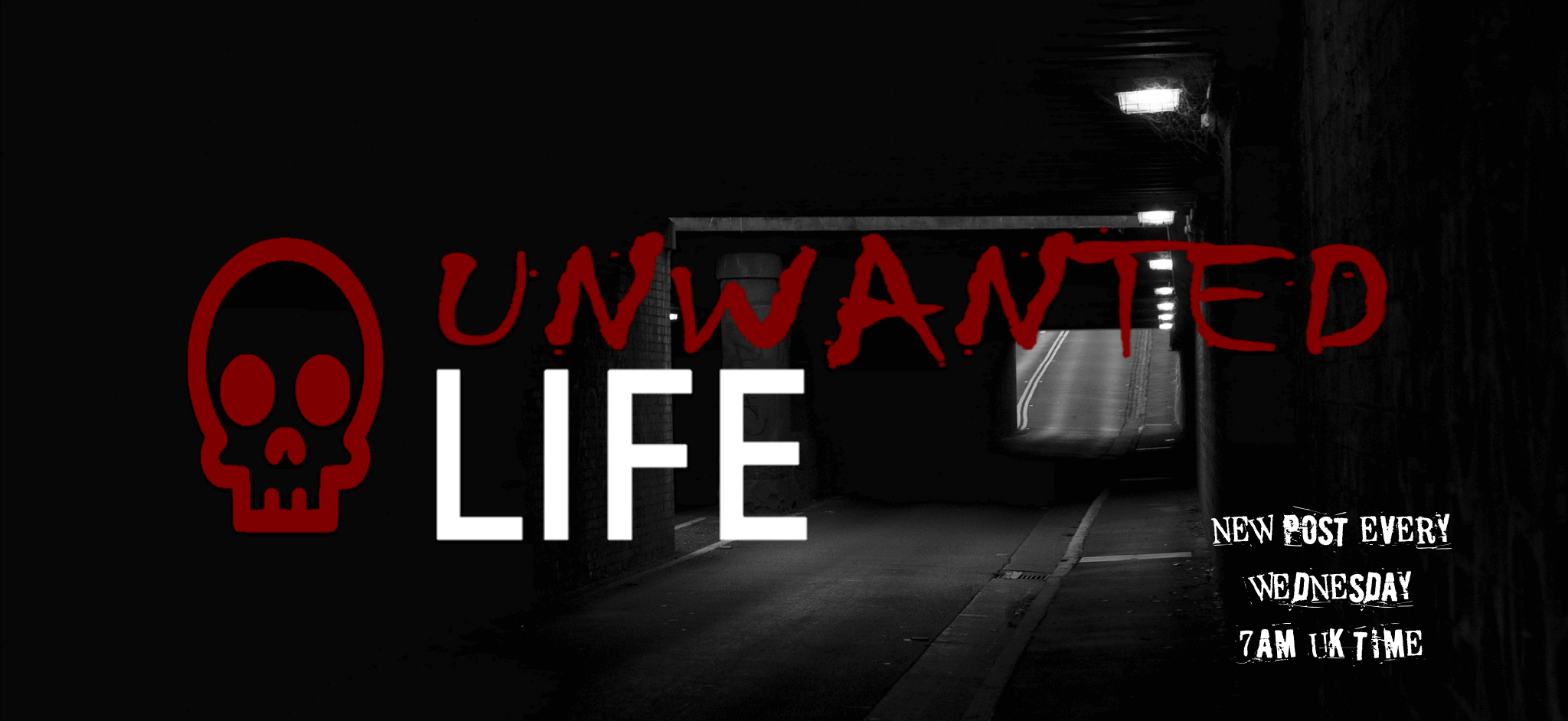Before we get started, I’d just like to make it clear that exposure therapy is best done with the aid of a therapist. This is especially true for people with post-traumatic stress disorder (PTSD). However, I also know that waiting lists can be long and not everyone can afford to go privately. That said before you consider doing imaginal exposure, or any exposure therapy work, please take it slowly, and if it gets too much, please seek help. I have a global crisis and support page which you can find here and a UK crisis and support page you can find here, should you need more immediate support.
What Is Imaginal Exposure?
First off, before we start talking about imaginal exposure, let’s first talk about exposure therapy. Exposure therapy, as the name suggests, involves exposing someone to anxiety-producing stimuli to cause the stimuli to weaken as an anxiety trigger (Wiederhold et al., 2002).
Imaginal exposure makes up the three main components of exposure therapy, which are imaginal exposure, interoceptive exposure, and in-vivo exposure. Imaginal exposure and in-vivo exposure often come packaged together as graded exposure. Interoceptive exposure and in-vivo exposure have already been covered in previous articles I’ve written. But in short, interoceptive exposure is used to mimic symptoms of anxiety for someone to become accustomed to. While in-vivo exposure is about real-world exposure to anxiety stimuli.
There is also a fourth component, which is virtual reality exposure. As the name suggests, they use virtuality to simulate different experiences that cause fear to help somebody tackle their anxiety (Healthline). An example of this might be to help a person become accustomed to heights without putting them at real-world risks, such as having them look over a high ledge in virtual reality.
Now that I’ve explained exposure therapy and the other three components of it, let’s dig into what imaginal exposure is. Imaginal exposure uses several strategies to help someone face their feared stimulus using their imagination to cause symptom reduction (Bryant et al., 2003).
To help a client imagine their fears, they could be told to reimagine a memory or told to imagine the worst-case scenario. This can be done inwardly, out loud, by drawing (the method favoured for children), or by written homework assignments (The Counseling Palette).
Imaginal exposure draws on the avoidance-anxiety model, whereby avoidance is the central maintaining factor of anxiety (Levinson, Rapp, and Riley, 2014). Taking my experience as an example, my anxiety disorders caused me to fear embarrassing myself, mainly through the fear of losing bladder and bowel control. Although this had never happened to me, I had a string of safety behaviours that maintained my fear. The most dominant one of those safety behaviours was to just not leave my room. I avoided going out so I could avoid my fear.
The primary use of imaginal exposure is to help people face fears that might not be practical or accessible to face through in-vivo exposures (Levinson, Rapp, and Riley, 2014). It can also be used as a good starting point for in-vivo exposure therapy and virtual reality exposure. This is good for two reasons. One, the client might need to ease into their exposure treatment. And two, some people aren’t always able to feel present in an imagined exposure experience (Wiederhold et al., 2002).
How Does Imaginal Exposure Work?
The reason for doing this is to cause habituation through repetition so that the anxiety-inducing stimuli become less fear-provoking (Dallas Counseling). This is also how in-vivo exposure works, except in a real-world setting.
Imaginal exposure also benefits from helping you to process trauma. As I explained when I talked about resolving my childhood trauma to help reduce the effects of my insomnia, where journaling about it can help you process the emotions linked to the trauma. The techniques of imaginal exposure can do for you what journaling about my trauma did for me.
Like with the other forms of exposure therapy, exposing yourself to your anxiety-inducing fears, it’ll help you so learn that what you feared isn’t as scary as you thought. This is another benefit of repetition in exposure therapy.
Imaginal Exposure In Action
The following example was provided by Bryant et al. (2003). In their PTSD study, participants were told to provide a narrative of their trauma that involved reciting the traumatic experience in the first person and using the present tense. They were also told to focus on their full range of sensory and affective responses to the trauma. This was completed every session for six sessions, with each session lasting 45 minutes. Participants were also encouraged to practice this as homework.
The use of imaginal exposure for treating PTSD is very common, and although it might seem intense (and likely is intense for the person doing it), it is also very effective. The study by Bryant et al. (2003) added to the already large collection of evidence for its effectiveness.
Another example of imaginal exposure, this time by Levinson, Rapp, and Riley (2014), was used in a case study treatment of anorexia, an eating disorder. The participant of the case study completed five imaginal exposure sessions, whereby they used three variations of an exposure script specific to the participant’s core fear of becoming fat. During the sessions, the participant would read the scripts while trying to imagine they were experiencing the scenario written in the script.
The findings of this case study show that imaginal exposure is a possible treatment for anorexia. This also suggests it has the potential in treating other eating disorders. However, it is a single-participant case study, so further research would need to be done. Something that the researchers also pointed out themselves.

First Things First
One of the first things you might want to consider before starting on an imaginal exposure journey, is to plan out your fear-inducing hierarchy, just like I said in my graded exposure article. For this, all you need to do is work out what your fears are and put them in a list of the most fear-inducing to the least. You can use my graded exposure workbook for this, which will make it easier to plan out and track your progress.
Imaginal Exposure Script
Not everyone has a good inner eye, I know I don’t, so scripting is a good place to start next. To do this, you’ll need to practice writing out your worst fears in as much detail as possible, including the sights, sounds, smells, textures, feelings, and thoughts (Center for Psychological & Behavioral Science).
This is a good first step whereby you just keep writing out scripts on the fear-inducing situation, vary it up where possible, as well as highlight key text and write in cursive or different colours (Dallas Counseling). This will allow each time you write a script to feel like a novel experience.
Also, all the scripts should be written in first-person using the present tense (Center for Psychological & Behavioral Science), something I’m not great at doing. It can also be a good idea to create scripts of different lengths (San Francisco Bay Area Center for Cognitive Therapy). This can help with the next step.
Once you’re comfortable with writing out the scripts, the next stage can begin. For this step, you’ll want to read the scripts aloud while trying to imagine the scenario in the script you’re reading. It can also be useful to record yourself reading the scripts so you can play them to yourself to further aid in challenging your fears (Center for Psychological & Behavioral Science).
One way you could do this is to get comfortable in a chair or in your bed, close your eyes, hit play, and then try to imagine the scenario. But remember, don’t push yourself too hard. You don’t want to cause yourself to have a setback. There’s no rush, so take it at a steady pace.
You may want to start with a single script first to read out. Starting with the shortest script is the best idea here, so ideally have a script under five minutes to read aloud (San Francisco Bay Area Center for Cognitive Therapy). Then add the others as you become more comfortable with the first scripted scenario.
Pure Imagination
As you might have already figured out, using your imagination in imaginal exposure is a big part of this type of exposure treatment. So it won’t be a surprise when I tell you that you don’t have to do the scriptwriting if you don’t want to, which might be magic to the ears of my fellow dyslexics. You can rely solely on your imagination.
If you’re lucky to have a good inner eye, then just lay back, close your eyes and imagine the scenarios instead. You’ll still need to engage all your senses while doing this, or its effects will be diminished. Just be there in the moment, but don’t overdo it.
When I worked with someone who had developed a fear of going for an operation, after a bad experience, we created a hierarchy of their fears. The client was then able to imagine each level of fear, working their way up. They started by just picturing themselves in a hospital waiting area, imagining the smells, the sounds, etc, working up to being in the operating room.
For those of you who are poor imaginers, then there is a technique that can help you get better, at least according to San Francisco Bay Area Center for Cognitive Therapy. You can do this by doing imagery training. To do this, you’ll need to keep trying to imagine pleasant scenes, such as watching a sunset or sitting on the beach. When you do this, try and engage as many of your senses as possible, such as the warm sun on your face and the light in your eyes.
Each time you try doing this, rate the vividness out of 1-10, with 1 being not vivid at all to 10 being like you’re there. Keeping doing this until you can imagine any pleasant scene with a high vividness without any issues. To help you with this, you might want to look up a YouTube video to help guide you through imagining these pleasant scenes until you can do it on your own.
Don’t give up too soon while training to be better at imagining things in your mind. But should you have given this a reasonable amount of time, without much improvement, then there is something else you can do instead.
Other Ways To Use Imaginal Exposure
What might surprise you as another step you can do for imaginal exposure is to use actual images and videos (Anxiety Canada). This is often more associated with graded exposure, which uses in-vivo exposure for most of it. But this is actually an imaginal exposure method. This is what makes it a handy first step before moving on to in-vivo exposure.
Again, when working with that client with a fear of having another operation, one of the steps was to look at photos of medical equipment, to move on to a more real-world feeling. They also added smells using medical spirits.
From Imaginal Exposure To In-vivo Exposure
As I’ve already said, imaginal exposure can be a great way to start your in-vivo exposure journey. The following is a basic example that explains how that might look. Steps 1-6 are imaginal exposure, whereas steps 7-10 are in-vivo exposure (Dallas Counseling). This one was created using someone having a fear of mice. Again, my graded exposure workbook would work well with planning your steps from imaginal exposure to in-vivo exposure.
- Start by saying the word “mouse”.
- Write a story that features a mouse.
- Look at an image of a mouse.
- Look at a picture of a lot of mice.
- Watch an educational video about mice.
- Watch a video that shows a mouse bite.
- Visit a pet shop so you can see a mouse.
- Watch someone holding a mouse in front of you.
- Hold a real living mouse in your hand for five seconds.
- Hold a real living mouse in your hand for 5 minutes.
Summary
I’ve been a fan of exposure therapy since using it on myself to overcome my own issues with anxiety-induced psychosis. What makes imaginal exposure great is that you can use it in the comfort of your own home. Then, when you’re ready, you can take it out on the road and move on to in-vivo exposure therapy so you can rid yourself of these fears once and for all.
As always, leave your feedback in the comments section below. Also, please share your experiences with imaginal exposure and exposure therapy in the comments section below as well. Don’t forget, if you want to stay up-to-date with my blog, then sign up for my newsletter below. Alternatively, get push notifications for new articles by clicking the red bell icon in the bottom right corner.
Lastly, if you’d like to support my blog, you can make a donation of any size below. Until next time, Unwanted Life readers.
References
Bryant, R. A., Moulds, M. L., Guthrie, R. M., Dang, S. T., & Nixon, R. D. (2003). Imaginal exposure alone and imaginal exposure with cognitive restructuring in treatment of posttraumatic stress disorder. Journal of consulting and clinical psychology, 71(4), 706. Retrieved from https://www.researchgate.net/profile/Reginald-Nixon/publication/10608468_Imaginal_Exposure_Alone_and_Imaginal_Exposure_With_Cognitive_Restructuring_in_Treatment_of_Posttraumatic_Stress_Disorder/links/552fb1670cf22d4371713c94/Imaginal-Exposure-Alone-and-Imaginal-Exposure-With-Cognitive-Restructuring-in-Treatment-of-Posttraumatic-Stress-Disorder.pdf.
Levinson, C. A., Rapp, J., & Riley, E. N. (2014). Addressing the fear of fat: Extending imaginal exposure therapy for anxiety disorders to anorexia nervosa. Eating and Weight Disorders-Studies on Anorexia, Bulimia and Obesity, 19, 521-524. Retrieved from https://www.ncbi.nlm.nih.gov/pmc/articles/PMC4183728.
Wiederhold, B. K., Jang, D. P., Gevirtz, R. G., Kim, S. I., Kim, I. Y., & Wiederhold, M. D. (2002). The treatment of fear of flying: a controlled study of imaginal and virtual reality graded exposure therapy. IEEE transactions on information technology in biomedicine, 6(3), 218-223. Retrieved from https://www.researchgate.net/profile/Brenda-Wiederhold/publication/11079623_The_treatment_of_fear_of_flying_A_controlled_study_of_imaginal_and_virtual_reality_graded_exposure_therapy/links/5b64ea28a6fdcc94a70c14d5/The-treatment-of-fear-of-flying-A-controlled-study-of-imaginal-and-virtual-reality-graded-exposure-therapy.pdf.



This is such a great post, well written and very informative. This therapy can be very helpful when done correctly and safley. All around Therapy in general is a very helpful tool to help us get through life and resolve many things. Keep up the great work.
Thank you 😊
This seems like an effective therapy but as you said in the beginning of this post that exposure therapy should be done with the aid of a therapist. Absolutely amazing and informative post. 👍
Thank you for commenting
Loving the way you go into incredible detail and really walk the reader through the concept of imaginal exposure, lay out how it works, and provide some great tips in regards to how to use it. Fabulous article! 👍
Thank you. I have a special fondness for exposure therapy, so I want to do it justice. Thanks for commenting
Very interesting, I didn’t know about the imaginal exposure but learned a lot from this post. Thank you for sharing!
Thanks for commenting
I have heard about exposure therapy, but not imaginal exposure, so this was a great breakdown on what it is, how it works, and ways to use it.
I’m glad I was able to enlighten you on a lesser known component of exposure therapy
Another excellent article. Imagination is so powerful, and I love the ideas here. For me, writing a script, akin to journaling, really helps me to overcome anxieties. Thanks again for such an informative piece.
Thank you
It’s good to read about alternative therapies, i had not heard of exposure or imaginal therapy this post goes into good depth.
Thanks 😊
I’m scared of heights, especially when walking downstairs. I’m wondering if this type of therapy could work for me.
Thanks for posting this, you really made me think.
It certainly should help with that
It has been a while since I checked out your posts and this one is a reminder of how well you deliver important topics! I learned so much from this and I am really happy I stopped by to read it. Thanks so much for sharing and providing helpful resources as well.
Thanks for stopping by
This article offers valuable insights on imaginal exposure as a first step in exposure therapy. Your clear explanations and practical advice make it easy for readers to understand the process and its benefits. Thanks for sharing your knowledge.
Thank you for commenting